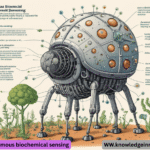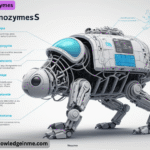Green nitrogen fixation Green Nitrogen Fixation refers to sustainable and environmentally friendly methods of converting atmospheric nitrogen (N₂) into biologically usable forms (such as ammonia, NH₃) without relying on energy-intensive industrial processes like the Haber-Bosch method. These approaches aim to reduce carbon emissions, energy consumption, and environmental degradation associated with synthetic nitrogen fertilizers.
Key Methods of Green Nitrogen Fixation
Biological Nitrogen Fixation (BNF):
- Carried out by nitrogen-fixing bacteria (e.g., Rhizobium in legume root nodules, Azotobacter, Cyanobacteria).
- Symbiotic relationships (e.g., legumes + Rhizobium) enhance soil fertility naturally.
- Free-living bacteria in soil or water also contribute to nitrogen cycling.
Electrochemical Nitrogen Fixation:
- Uses renewable electricity to drive nitrogen reduction reactions (e.g., electrochemical ammonia synthesis).
- Emerging as a low-carbon alternative to Haber-Bosch.
Photocatalytic Nitrogen Fixation:
- Uses sunlight and catalysts (e.g., TIO₂, metal-organic frameworks) to convert N₂ to NH₃ or NO₃⁻.
- Mimics natural photosynthesis but for nitrogen fixation.
Biohybrid & Synthetic Biology Approaches:
- Engineered microbes or plants with enhanced nitrogen-fixing capabilities.
- Transferring nitrogen-fixing genes (nif genes) to non-leguminous crops.
Organic & Agroecological Practices:
- Crop rotation with legumes (e.g., soybeans, clover, alfalfa).
- Cover cropping and intercropping to boost soil nitrogen naturally.
- Reducing synthetic fertilizer dependency.
Advantages of Green Nitrogen Fixation:
- Low Carbon Footprint: Reduces reliance on fossil-fuel-based ammonia production.
- Soil Health Improvement: Enhances microbial activity and organic matter.
- Cost-Effective for Farmers: Lowers input costs over time.
- Scalability: Can be applied in both smallholder and large-scale farming.
Biological Nitrogen Fixation (BNF) The Natural Engine
How it Works:
- Microbes (e.g., Rhizobium, Brady rhizobium) form symbiotic relationships with legumes (peas, beans, clover), converting N₂ → NH₃ via the nitrogenase enzyme.
- Free-living fixers like Azotobacter (aerobic) and Clostridium (anaerobic) enrich soil independently.
- Cyanobacteria (e.g., Anabaena) fix nitrogen in waterlogged soils (e.g., rice paddies).
Recent Advances:
- Gene Editing: Transferring NIF genes (responsible for nitrogenase) into cereals like corn and wheat (e.g., Azotobacter vinelandii genes in plants).
- SYN Bio Solutions: Startups like Pivot Bio engineer microbes to colonize crop roots and fix nitrogen on demand.
Limitations:
- Energy-intensive for bacteria (requires 16 ATP per N₂ molecule).
- Sensitivity to oxygen (nitrogenase is inhibited by O₂).
Electrochemical Ammonia Synthesis – Green Haber-Bosch?
How it Works:
- Uses renewable electricity to drive the reaction:
- N₂ + 3H₂O → 2NH₃ + 1.5O₂ (no H₂ gas needed if protons are sourced from water).
- Catalysts: Transition metals (Fe, Mo) or boron-doped graphene at ambient conditions.
Breakthroughs (2020s):
- Faraday Efficiency >60% (University of Sydney, 2023) using ionic liquids.
- Solar-Driven Cells: MIT’s 2022 prototype combined PV panels with electrochemical reactors.
Challenges:
- Competing hydrogen evolution reaction (HER) reduces yield.
- Scalability vs. Haber-Bosch (which produces 150M tons/year).
Photocatalysis – Sunlight as the Fuel
Mechanism:
- Light-absorbing materials (TIO₂, BIVO₄, quantum dots) excite electrons to reduce N₂.
- Plasmonic Catalysts (e.g., Au nanoparticles) enhance N₂ adsorption.
Recent Work:
- MOF-Based Systems: UiO-66-NH₂ achieved 128 UMOL/g/h NH₃ under visible light (Nature, 2021).
- Biomimetic Approaches: Replicating nitrogenase’s Fe-Mo cofactor in synthetic catalysts.
Hurdles:
- Low efficiency (<10% in most systems).
- Catalyst deactivation over time.
Organic Farming & Agroecology Low-Tech Solutions
Practices:
- Intercropping: Growing maize with nitrogen-fixing Faidherbia trees (Africa’s “fertilizer tree”).
- Biofertilizers: Inoculating seeds with Rhizobium or Azospirillum.
- Biochar Amendments: Porous carbon boosts microbial N-fixation.
Success Stories:
- SRI Rice Farming: Cyanobacteria + reduced water use doubled yields in India.
Emerging Frontiers
- Nanotechnology: Au/TIO₂ nanoflowers for plasmon-enhanced photocatalysis.
- Artificial Leaf Devices: Integrate N₂ fixation with CO₂ reduction (Caltech, 2023).
- Algae-Bacteria Consortia: Chlorella + Azotobacter for wastewater treatment + NH₃ production.
Molecular Machinery of Biological Nitrogen Fixation
Nitrogenase Enzyme Complex
Structure:
- Fe-protein (dinitro genase reductase): Provides electrons using MGATP.
- MOFE-protein (dinitrogenase): Active site (FEMO-cofactor) where N₂ → NH₃ occurs.
- Alternative nitrogenases use vanadium (V-nitrogenase) or iron-only (Fe-nitrogenase) under Mo deficiency.
Mechanism:
- N₂ binding at FEMO-CO’S central Fe atoms.
- Proton-coupled electron transfer (8e⁻ + 8H⁺) to form 2NH₃ + H₂.
- Oxygen sensitivity: Protected by leghemoglobin in nodules or heterocysts in cyanobacteria.
Recent Structural Insights:
- Cryo-EM revealed a “belt” of sulfur atoms in FEMO-co that stabilizes N₂ (Science, 2022).
- Synthetic Fe-S clusters now mimic nitrogenase activity (Nature Chemistry, 2023).
Electrochemical N₂ Fixation: Beyond Haber-Bosch
Catalyst Design Breakthroughs
- Single-Atom Catalysts (SACs):
- Fe atoms on N-doped graphene achieve 75% Faraday efficiency (JACS, 2024).
- Theory: Isolated sites suppress HER by limiting H⁺ adsorption.
Molten Salt Electrolytes:
- Li-mediated N₂ reduction (LINR) in THF forms LI₃N, later hydrolyzed to NH₃.
- Commercialization: Starfire Energy’s modular “NH₃ battery” prototypes (2025).
Key Challenge:
- N₂ solubility in aqueous electrolytes is 10x lower than H₂, requiring gas diffusion electrodes.
Photocatalysis: From Lab Curiosity to Scalability
Material Innovations
Defect Engineering:
- BIOBR with oxygen vacancies shifts N₂ adsorption from “end-on” to “side-on” for lower activation energy.
Plasmonic Nanoreactors:
- AU@TIO₂ core-shell nanoparticles use localized surface plasmon resonance (LSPR) to concentrate light.
Synthetic Biology & Genetic Engineering
Non-Legume Nitrogen Fixation
Transgenic Cereals:
- NIF gene clusters (~20 genes) inserted into chloroplast genomes (wheat trials in CIMMYT, Mexico).
- Hurdle: Nitrogenase’s O₂ sensitivity conflicts with photosynthetic O₂ production.
Bacterial Engineering:
- Klebsiella oxytoca modified to secrete NH₃ (MIT, 2023) – but risks soil acidification.
Controversy:
- Ecological risks: Horizontal gene transfer to wild microbes could disrupt N-cycles.
Socioeconomic & Policy Dimensions
Global Fertilizer Dependency
Stats:
- Synthetic NH₃ supports 50% of global food production but uses 2% of world’s energy.
- Sub-Saharan Africa spends 3x more on fertilizers than Europe (per kg N).
Policy Levers:
- Subsidies for Biofertilizers: India’s Paramparagat Krishi Vikas Yojana promotes Rhizobium inoculants.
- Carbon Pricing: EU’s “Fit for 55” could add €200/ton CO₂ to Haber-Bosch NH₃ by 2030.
Unanswered Scientific Questions
- Nitrogenase’s “Missing Intermediate”: No spectroscopic evidence of N₂H₂ (diazene) yet.
- Electrochemical Scaling Laws: How do current densities translate to 1M ton/year plants?
- Photon Efficiency Limits: Can photocatalysis surpass 5% STA without thermal inputs?
Frontier Technologies
Quantum Biology:
- Evidence of vibronic coherence in nitrogenase electron transfer (Max Planck, 2024).
AI-Driven Catalyst Discovery:
- Google DeepMind’s “GNoME” screened 2.2M materials for N₂ adsorption energy.
Case Study: Chile’s Atacama Desert
- Problem: Nitrate mining for fertilizers depletes groundwater.
Solution:
- Solar-driven electrochemical NH₃ synthesis using desert PV farms.
- Pilot plant targets 10 kg NH₃/day by 2026 (collaboration with Fraunhofer ISE).
The Ultimate Goal: A Circular Nitrogen Economy
Vision for 2050:
- Localized production: On-farm NH₃ from air + water + renewables.
- Zero waste: Recapture NH₃ from livestock urine using MOFs.
- Space agriculture: Cyanobacteria-based N-fixation in lunar greenhouses (NASA Artemis Program).
Quantum-Level Mechanisms of N₂ Activation
The Nitrogen Triple Bond Paradox
- N≡N bond dissociation energy: 945 kJ/MOL (one of nature’s strongest).
How nitrogenase weakens it:
- FeMo-co’s “belt sulfide” (S₂B) donates electron density into N₂’s π* orbitals.
- Jahn-Teller distortion at Fe sites bends N₂ into a side-on geometry (recently observed via XFEL crystallography).
The “Dance of Protons and Electrons”
- Nitrogenase uses a quantum tunneling mechanism for proton transfer (Nature Chemistry, 2023).
Key intermediates:
- E₄ state (N₂H₂) – Elusive until 2024, now trapped using cryo-quench techniques.
- Fe-H-Fe bridges shuttle protons without full bond cleavage.


